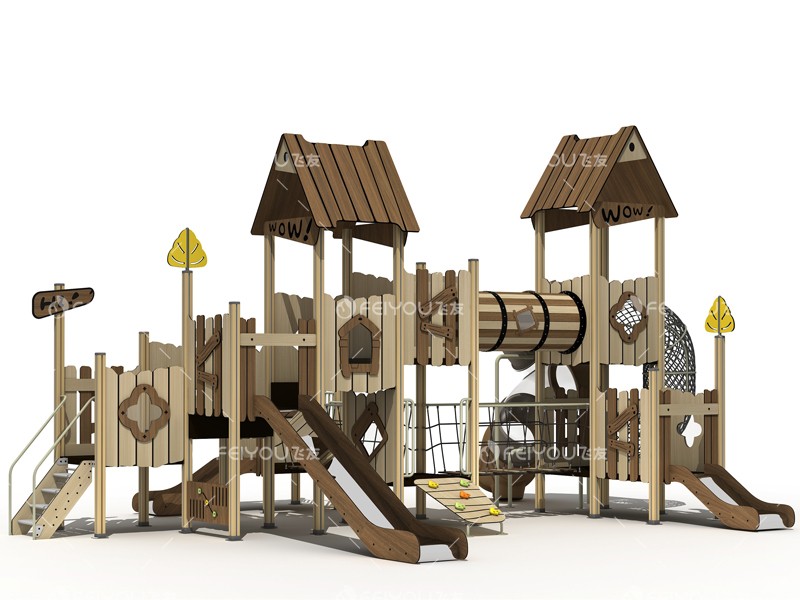Choosing materials suitable for children's playground equipment in the community requires comprehensive consideration of safety, durability, maintenance costs and adaptability to the environment. The following is a detailed analysis of the selection of materials for children's playground equipment in the community.
First of all, safety is the primary consideration for choosing materials for children's playground equipment. Children are easily excited when playing and have large movements, so the equipment must be able to withstand impact and friction without producing sharp edges or harmful substances. Plastic and rubber are two common safety materials. Plastic has good weather resistance and impact resistance, and is suitable for making equipment such as slides and swings. Rubber is often used for ground paving because of its good elasticity and good anti-slip performance to reduce injuries when children fall.
Secondly, durability is also a factor that cannot be ignored. Metal materials such as stainless steel or specially treated aluminum alloys are often used in complex structures such as climbing frames and slides because of their corrosion resistance and high strength. However, the metal surface may become overheated at high temperatures and cause burns to children, so regular inspection and maintenance are required. Wood is also one of the common materials. It is naturally beautiful, but it needs regular anti-corrosion and anti-insect treatment, and it is easy to rot in a humid environment, requiring more maintenance work.

Maintenance cost is an economic factor that needs to be considered in actual operation. Plastic and rubber products are relatively easy to clean and maintain, while metal and wood require regular maintenance and repair. For example, metal parts need to be painted regularly to prevent rust, and wood needs to be coated with protective oil or paint regularly to extend its service life.
Environmental adaptability is also something that needs to be considered when choosing materials. In rainy or humid areas, wood and some types of plastics may not be suitable because they are prone to rot or deformation. In this case, stainless steel or specially treated metal materials may be a better choice. In arid or direct sunlight areas, materials that are resistant to UV rays and not easy to fade need to be selected to ensure the beauty and durability of amusement equipment.
Finally, environmental protection is also an aspect that modern communities pay more and more attention to. The use of recyclable or environmentally friendly materials can reduce the impact on the environment. For example, amusement equipment made of recycled plastic is not only environmentally friendly, but also relatively low in cost. In addition, some natural materials such as bamboo are gradually becoming a new choice for children's amusement equipment because of their rapid growth and renewable nature.
In summary, the material selection of children's amusement equipment in the community needs to comprehensively consider safety, durability, maintenance cost, environmental adaptability and environmental protection. Plastic and rubber are commonly used materials for making amusement equipment because of their safety and easy maintenance. Metal materials such as stainless steel and aluminum alloy are suitable for complex amusement facilities due to their strength and durability. Although wood is naturally beautiful, it requires more maintenance and care. When choosing materials, local climate conditions and environmental requirements should also be considered to ensure that children's amusement equipment is both safe and sustainable.
+86-13566236059
#16 Chuangqiang Road, Light industrial area, Lucheng district, Wenzhou city, Zhejiang Province, China.
+86-577-85951908
+86-577-86457291
